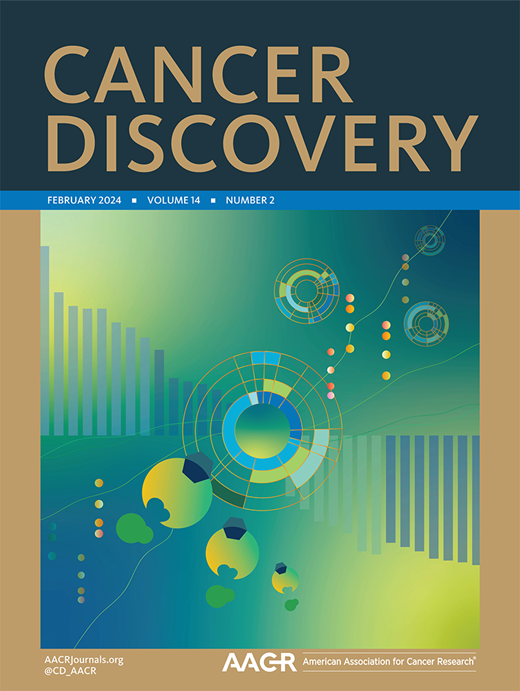肿瘤微管靶向药物筛选鉴定PKC调节剂作为胶质母细胞瘤进展的多能抑制剂
IF 33.3
1区 医学
Q1 ONCOLOGY
引用次数: 0
摘要
胶质母细胞瘤是一种无法治愈的原发性脑肿瘤,它依赖于神经样细胞过程肿瘤微管(TMs)侵入大脑。TMs还将单个肿瘤细胞连接到一个相互交流的多细胞网络中,从而抵抗当前的治疗方法。在这里,我们开发了一种综合的,全面的体外/体内抗tm药物筛选方法,包括基于机器学习的分析工具。两种蛋白激酶C (PKC)调节剂强有力地抑制TM的形成和起搏器肿瘤细胞驱动,TM介导的胶质母细胞瘤细胞网络通讯。由于未连接tm的肿瘤细胞对细胞毒性治疗的敏感性增加,PKC激活剂TPPB与放疗联合使用,长期活体双光子显微镜与空间分辨多组学配对显示抗tm和抗肿瘤作用。TPPB治疗还降低了tweety家族成员1 (TTYH1)的表达,TTYH1是侵袭性TMs的关键驱动因素。我们的研究建立了一个新的抗TM药物开发筛选管道,确定了TM主调控通路,并支持TM靶向治疗脑肿瘤的有效方法。本文章由计算机程序翻译,如有差异,请以英文原文为准。
Screening for Tumor Microtube-Targeting Drugs Identifies PKC Modulators as Multipotent Inhibitors of Glioblastoma Progression
Glioblastomas are incurable primary brain tumors that depend on neural-like cellular processes, tumor microtubes (TMs), to invade the brain. TMs also interconnect single tumor cells to a communicating multicellular network that resists current therapies. Here, we developed a combined, comprehensive in vitro/in vivo anti-TM drug screening approach, including machine-learning-based analysis tools. Two Protein Kinase C (PKC) modulators robustly inhibited TM formation and pacemaker tumor cell-driven, TM-mediated glioblastoma cell network communication. Since TM-unconnected tumor cells exhibited increased sensitivity to cytotoxic therapy, the PKC activator TPPB was combined with radiotherapy, and long-term intravital 2-photon microscopy paired with spatially resolved multiomics revealed anti-TM and anti-tumor effects. TPPB treatment also decreased the expression of tweety family member 1 (TTYH1), a key driver of invasive TMs. Our study establishes a novel screening pipeline for anti-TM drug development, identifies a TM master regulator pathway, and supports the approach of TM targeting for efficient brain tumor therapies.
求助全文
通过发布文献求助,成功后即可免费获取论文全文。
去求助
来源期刊

Cancer discovery
ONCOLOGY-
CiteScore
22.90
自引率
1.40%
发文量
838
审稿时长
6-12 weeks
期刊介绍:
Cancer Discovery publishes high-impact, peer-reviewed articles detailing significant advances in both research and clinical trials. Serving as a premier cancer information resource, the journal also features Review Articles, Perspectives, Commentaries, News stories, and Research Watch summaries to keep readers abreast of the latest findings in the field. Covering a wide range of topics, from laboratory research to clinical trials and epidemiologic studies, Cancer Discovery spans the entire spectrum of cancer research and medicine.
 求助内容:
求助内容: 应助结果提醒方式:
应助结果提醒方式:


